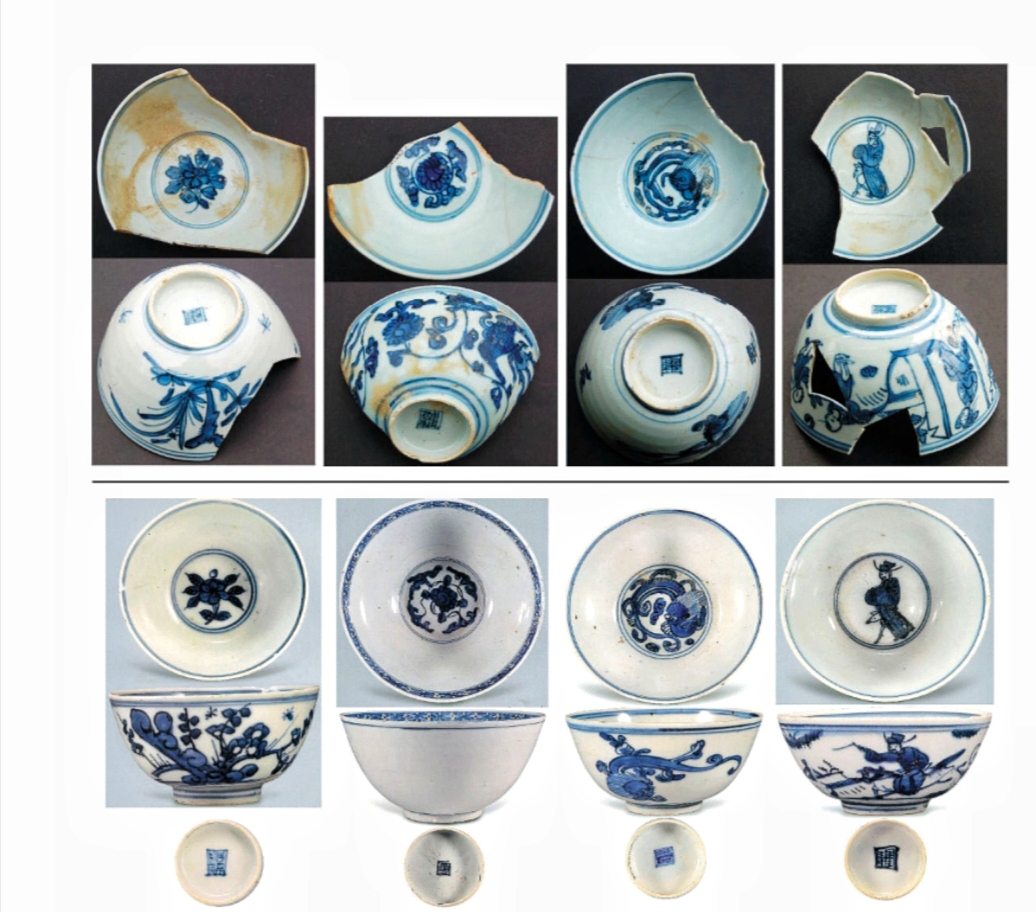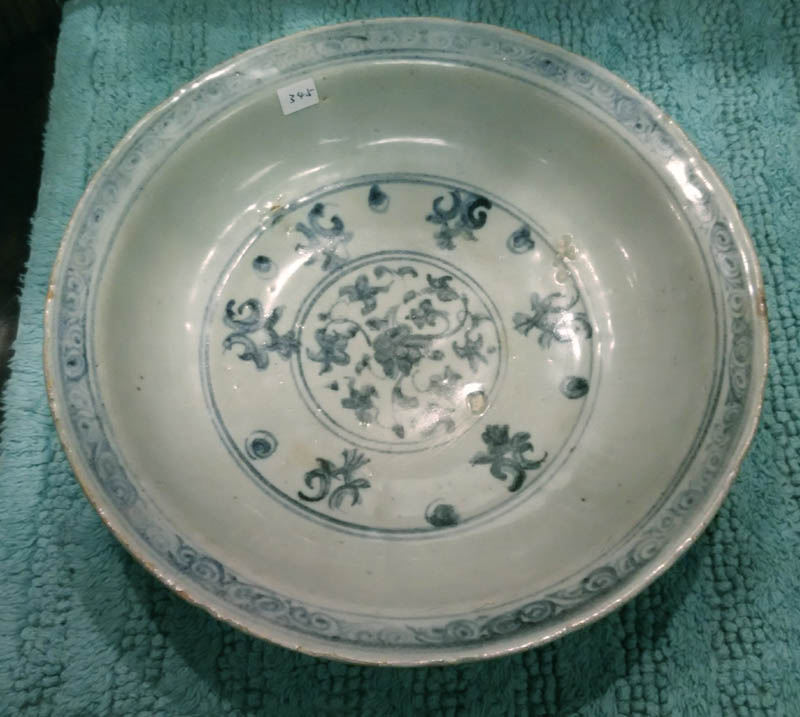
Discovered in 1994, approximately 9 km from Barangay San Isidro, the San Isidro wreck contained a cargo primarily composed of Fujian Zhangzhou blue-and-white ware. The finds included dishes, saucers, bowls, jars, and a covered box. Additional artifacts included Chinese and Thai stoneware jars, a Vietnamese box, and two Thai jarlets with iron-black motifs. Researchers from the National Museum suggest the vessel was locally built, likely functioning as a shuttle ship transporting goods from larger trading vessels, such as Chinese junks.








| Zhangzhou plates from the San Isidro Wreck on Display at the Philippines National Museum |
Two Thai Sawankhalok jarlets with iron-black decoration provide a terminus post quem of circa 1550. However, their small quantity raises uncertainty about whether they were part of the original cargo or older possessions of the crew.
Parallels can be drawn with the Xuande and Singtai wrecks off Malaysia’s east coast, both of which carried Thai iron-black painted ware (primarily covered boxes) alongside Jiajing-era (1522–1567) Chinese blue-and-white porcelains. The Ko Kradat wreck, salvaged off southeastern Thailand between 1978 and 1980, contained Thai iron-black painted wares, brown-glazed jars/jarlets, and a small number of Zhangzhou blue-and-white ceramic fragments. It also yielded some Jingdezhen blue-and-white ware, including one fragment with a Jiajing reign mark, suggesting a date within or after that period.
 |
 |
| Thai Sawankhalok jarlet recovered from San Isidro wreck | Thai Sawankhalok cover boxes from Xuande wreck |
 |
| Fragment with the Made in Ming Jiajing Mark |
Shangchuan Island (上川岛), a Portuguese trading hub west of Macau before 1557, has yielded Zhengde/Jiajing-period (1506–1567) ceramic sherds, though none in kraak or Swatow styles. This suggests that prior to 1557, Swatow blue-and-white wares were either not yet in production or still in an experimental phase.
Comparative studies of Zhangzhou wares from San Isidro and Nanao 1 reveal a stylistic progression. Nanao 1 ceramics feature free-flowing calligraphic strokes but lack the precision of earlier wares. San Isidro’s blue-and-white motifs show strong affinities with Jingdezhen wares from the Hongzhi/Zhengde periods (1488–1521), whereas Nanao 1 reflects a more evolved style, suggesting that San Isidro predates Nanao 1.
.jpg) |
In 2019, thermoluminescence (TL) testing by the Shanghai Museum on two Jingdezhen samples from Nanao 1 yielded dates of 490±40 and 498±50 years, corresponding to 1569–1571 (Longqing era). This dating is further supported by stylistic similarities with ceramics excavated from the early/mid Wanli phase at Jingdezhen Guan Yinge.
 |
| Thermoluminescence (TL) testing by the Shanghai Museum on two Jingdezhen samples from Nanao 1 yielded dates corresponding to 1569–1571 (Longqing era). |
 |
| Top: Samples from Jingdezhen Guan Yinge. Bottom: Examples from Nanao 1 Wreck. |
 |
| Left: Guan Yinge Right: Nanao 1 Wreck |
Considering these factors, the San Isidro wreck likely dates to the late Jiajing period (c. 1560s).
Early Zhangzhou designs were heavily influenced by Jingdezhen blue-and-white wares from the Chenghua (1465–1487) and Jiajing periods. While Jingdezhen workshops transitioned to an outline-and-wash technique by the Hongzhi era (1488–1505), Zhangzhou kilns retained calligraphic brushwork to produce wares more efficiently and affordably for export.
 |
 |
| Left lotus drawing from a Hongzhi/Zhengde bowl and right lotus from a dish from San Isidro wreck. Both also using the calligraphic style of execution | |
 |
 |
| Hongzhi infant bowl and that from the San Isidro wreck. Both executed in the calligraphic style. | |
 |
 |
| Left Hongzhi abstract floral decoration and that from San Isidro wreck. Also note the floral sprays on the inner wall is an element that first appeared during the Ming interregnum period. It was seldom used by the Jingdezhen potters during the Jiajing period. | |
 |
 |
|
Left Jingdezhen plate and
right San Isidro plate with motif organised within concentric bands. The composition of the decoration, with central interior
decoration and further supplementary bands of decorative elements is popular on
Jingdezhen Jiajing period plates.
|
|
The San Isidro wreck provides a time capsule of late Jiajing-period Zhangzhou blue-and-white ceramics, characterized by calligraphic brushwork and Jingdezhen-inspired motifs. Supported by TL dating, comparative wrecks, and Shangchuan Island evidence, the wreck is securely dated to the 1560s, highlighting its archaeological significance in early Zhangzhou ceramic production and regional trade networks.
Written by: NK Koh (28 Mar 2020), update: 10 Jun 2022, 26 Feb 2025.